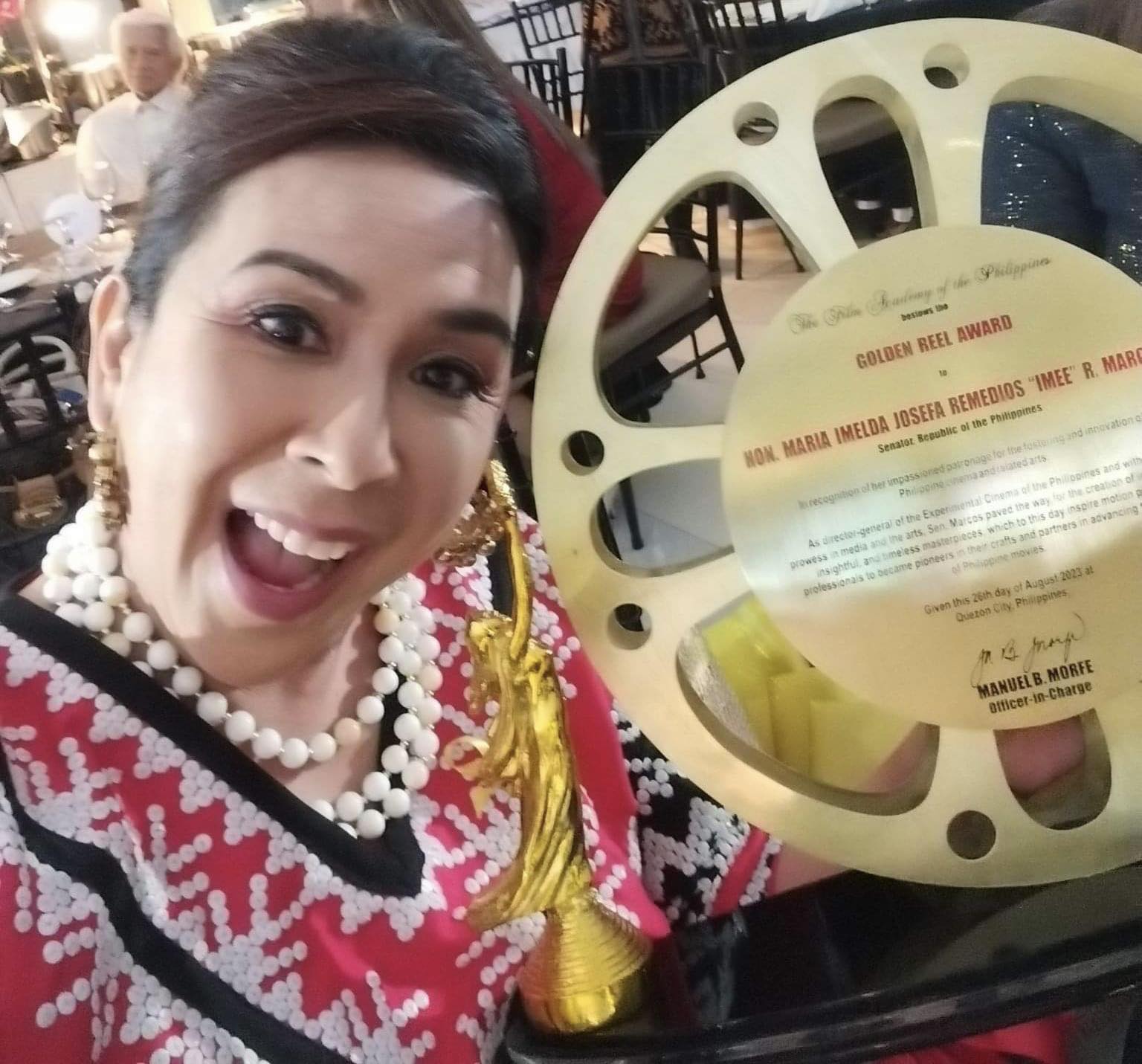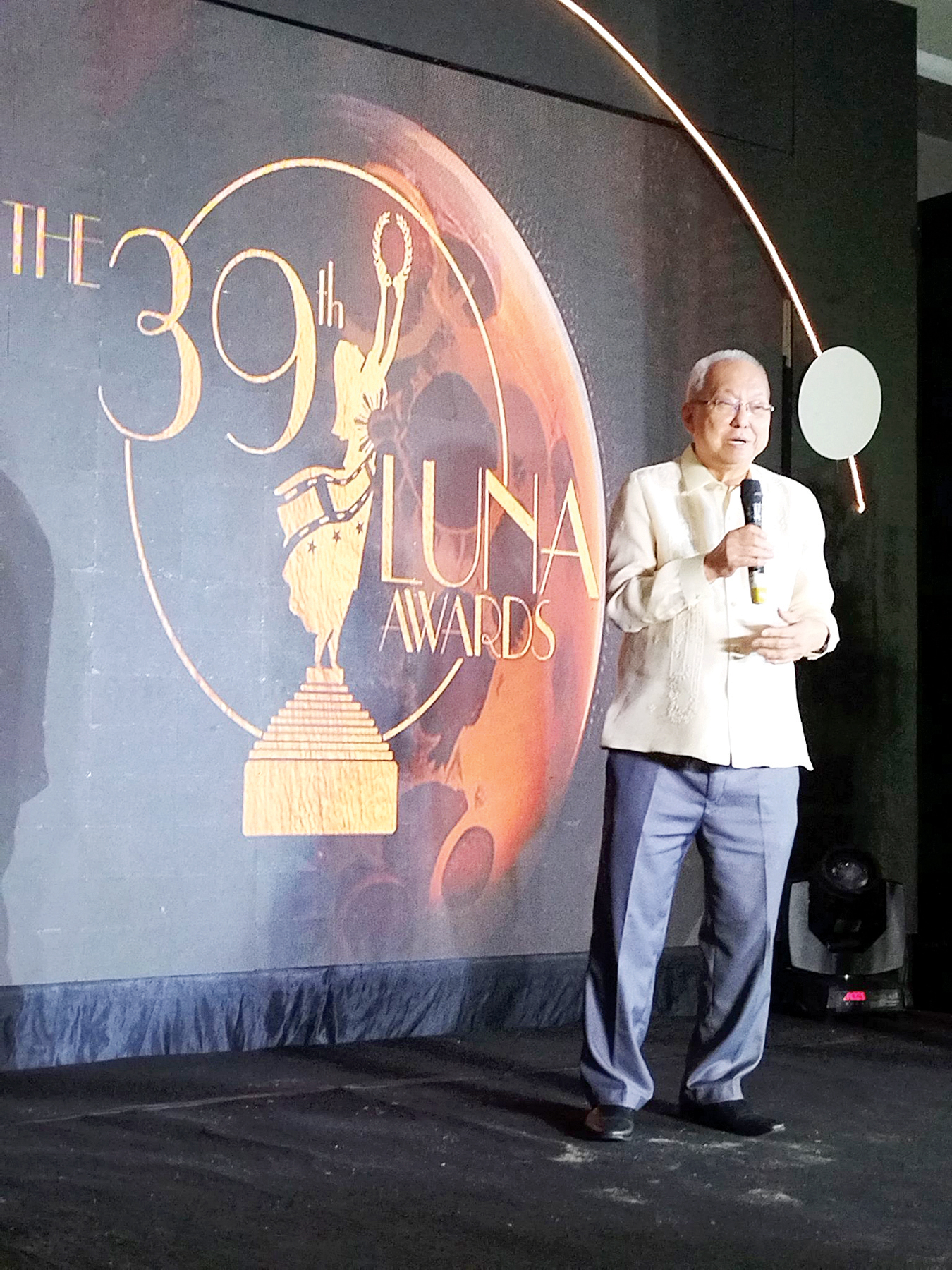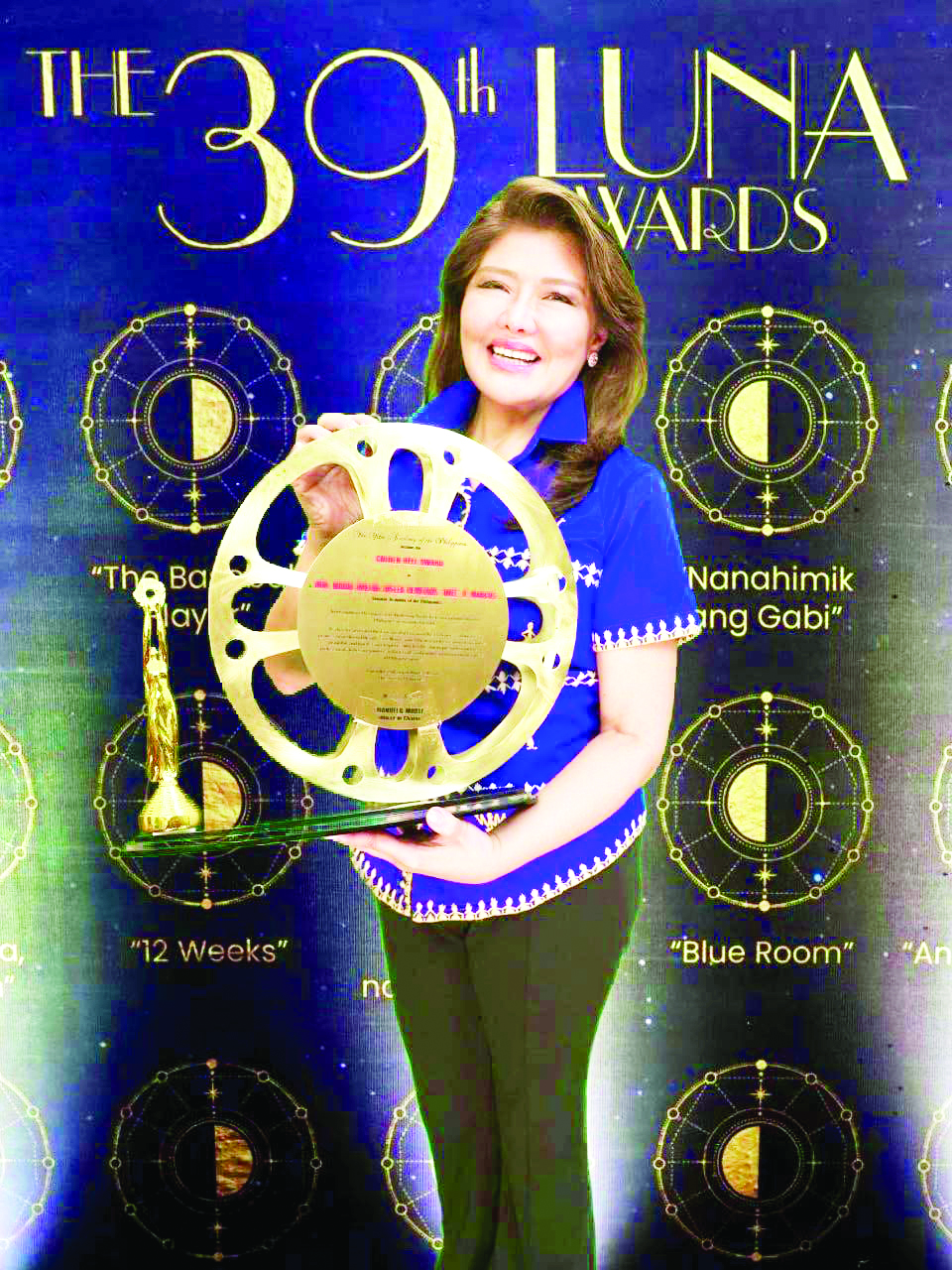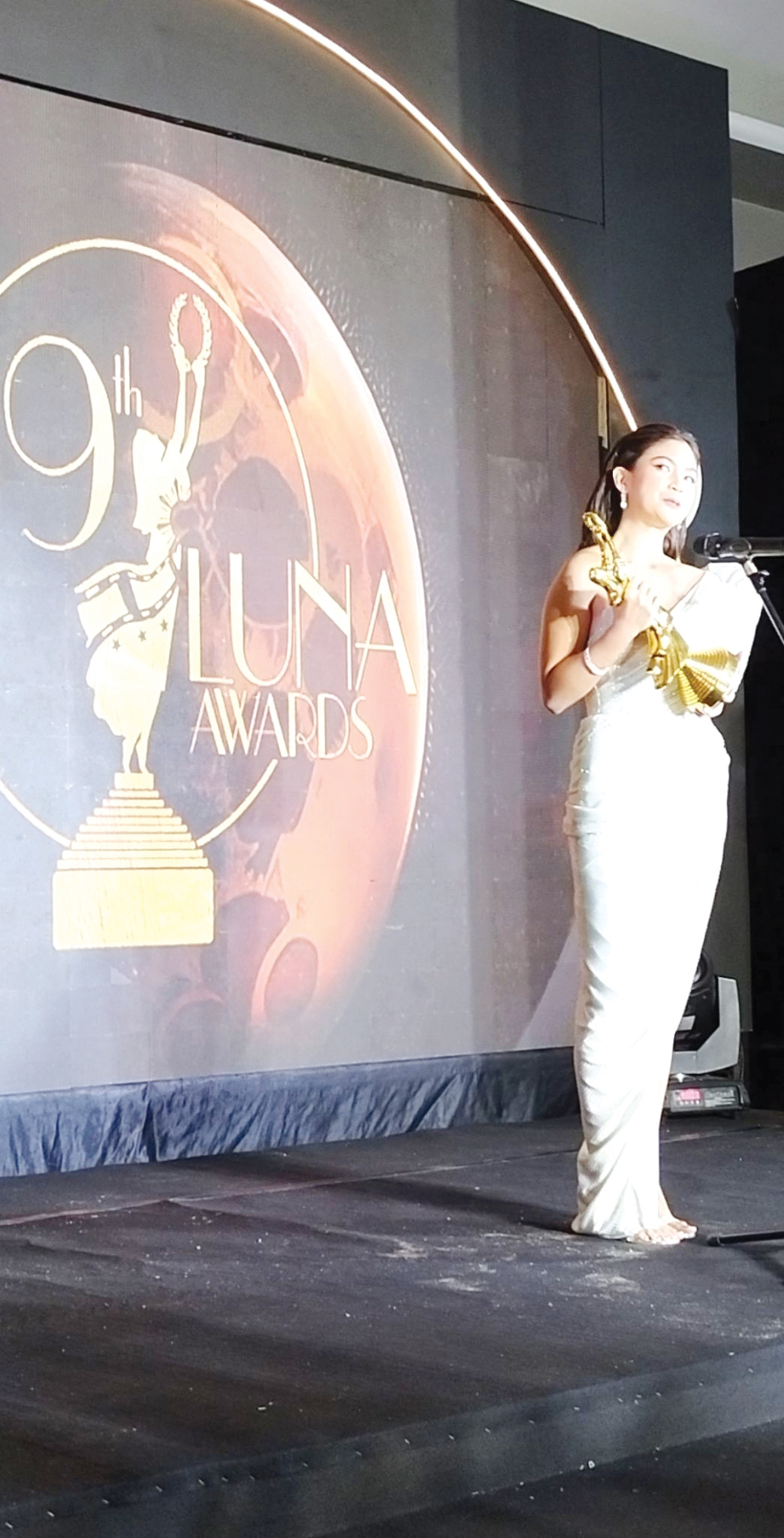So when are you committing the offense of cultural appropriation?
As Filipiniana goes mainstream, we need to know the answer
At A Glance
- There are three types of appropriation: Subject Appropriation, Content Appropriation, and Object Appropriation.

I went to the Oscars—well, to its Philippine counterpart. The Luna Awards, held yearly by the Film Academy of the Philippines, took place at the Quezon City Sports and Country Club last Saturday. The day before, I got a call asking if I could receive the award on behalf of my cousin, Senator Imee Romualdez Marcos, with matching acceptance speech! She was being honored with the Golden Reel Award for her contribution as director general of the Experimental Cinema of the Philippines (ECP). She pushed the boundaries and challenged conventions with films like Himala, Oro Plata Mata, and Soltero, just to name a few. The Golden Reel Award, as explained to me by my seatmate, president and trustee of the Movie Workers Welfare Foundation, Inc (Mowelfund) Boots Anson R. Rodrigo, is given every eight years and not just lightly. The Golden Reel Award and the Luna Awards are a big thing and I thank the stage gods for not making it clear to me the day before how significant this event is or, surely, I would have been a wreck on stage! As the adage goes, “Ignorance is bliss!”

The Luna Awards was made possible by Executive Order 640-A signed in 1981 by my uncle, the late President Ferdinand E. Marcos (PFM). Through his initiative, outstanding individuals and their achievements in film are celebrated every year. As the saying goes, “artists are indeed the creators of a culture and civilization, the seed bringers of the future. They are the sources of hope for man.”
As ECP director general, Imee certainly made her mark by pushing the boundaries, challenging conventions, and making audiences question their very perception of reality. She certainly embraced—fearlessly I might add, given that her parents represented the establishment—the unconventional, the abstract, and the avant-garde, paving the way for a new wave of artistic expression.

No wonder her name alone brings to mind myriad emotions and opinions. She does provoke thought and spark conversation, as experimental cinema should. Congratulations, Imee!
Taking on the role of #dakilangproxy for relatives has its perks and anxieties. The biggest concern for me is how to best present myself since I am representing people respected and looked up to by legions. From experience, I found that a good foundation of hair and makeup is key.

Knowing you look good and well put together is a confidence booster. So, after agreeing to take on the role of #dakilangproxy, I immediately called my friend, makeup artist, and the woman behind La Glamour Queen, Della Lau. I trust her abilities because she started doing makeup as a Mac makeup artist. She honed her skills, doing makeup on people walking in from the streets and making them look fabulous, the opposite of makeup artists who are used to doing makeup on already gorgeous women. Del learned the tricks of the trade in hiding or highlighting facial attributes to make her clients look their best.
The next item to think about when representing my cousin was what to wear. Since the Luna Awards called for Filipiniana, I was sent a top from the T’boli tribe. A split second I thought of cultural appropriations but then I remembered a paper I read by James O. Young, “Profound Offense and Cultural Appropriation,” where he pointed out conditions under which acts of appropriation are acceptable. You see, when cultural property created by one group is taken or borrowed by another it is automatic appropriation.

There are three types of appropriation: Subject appropriation, content appropriation, and object appropriation. Subject appropriation is when a non-member of a cultural group “represents its members in film, painting, or story while content appropriation is when a non-member of a cultural group “uses the group’s cultural products in the production of his or her art.” Object appropriation, on the other hand, refers to “appropriation of tangible objects (such as sculpture) transferred to members who produce it “to the possession of outsiders.” Think bululs, Tabwana wood carvings, etc.
Young argues appropriation becomes acceptable as long as there is redeeming social value and it does not profoundly offend the cultural group by falling under one or more of these three offenses: representation offense, consent offense, or violation offense.

Representation offense has to do with a non-member misrepresenting a cultural group by acting in a “derogatory and insulting way;” consent offence is when permission or consent should have been sought first from the cultural group by a non-member appropriating cultural content; and violation offence is committed when non-members appropriate cultural property of a cultural group that has no legal recourse because their cultural property is not protected by copyright.”
I made a quick mental checklist making sure I cleared all the boxes. So, wearing the T-boli top, bought from members of the cultural group on a recent trip to Davao, to the prestigious Luna Awards ceremony was okay and not subject to any cultural appropriation offence.

others as director general of the Experimental Cinema of the Philippines
The whole issue of cultural appropriation has been described as heterogeneous and should not be ignored, especially when you have the likes of ArteFino and Katutubo growing in popularity.
During the early days of ArteFino and Katutubo, I was so relieved to see Philippine traditional design highlighted and lauded, which I knew would surely make wearing FIlipiniana hip and cool again. One way to help communities sell and develop their craft is to create a market for them and increase demand. Given my experience as an archaeologist specializing in designs on prehistoric pots, I’m concerned about the impact this has on traditional arts in the country, especially on the cultural groups designers are collaborating with.
My analysis on pottery assemblages centers on the grammar of design found on prehistoric decorated earthenware pottery found in the Philippines. The grammar of design consists of the design motif and where this design motif is located.
I found that there is specificity of design in prehistoric pottery. There are bands used on specific areas of the pot called design zones, which were consistent for the most part across time and space. Variation in design and areas where designs are found can change slightly or at times drastically. This drastic change, one can argue is the result of the introduction of a new idea or technology from outside the community. The making of pots and the design motifs applied are handed down through generations within the community. The transfer of technology mentioned above within the community can also be said of textiles and decoration on textiles.
With artists and designers collaborating with cultural groups, my concern is the introduction of new ideas, fabrics, technology that may transform, if it hasn’t yet, the cultural group’s decorative repertoire that is emblematic of their cultural identity. I guess change is inevitable. As long as the traditional design patterns and where they were traditionally found on the fabric or clothing before the introduction of new techniques and materials by outsiders were thoroughly documented, the new designs seen coming out of the community will be better understood and explained by future generations. Unfortunately for researchers like myself who analyze cultural materials from the past, we may never know the cultural groups who created the materials or those who may have been responsible for changes found in the materials within their respective cultural assemblages.
At the moment, however, I have more pressing matters to attend to, like finding a solution to the downside of playing the role of #dakilangproxy: How to brush out heavily sprayed and teased hair without experiencing too much pain. The agony!